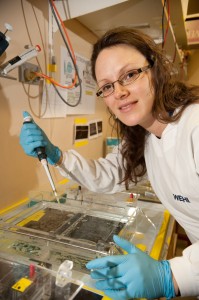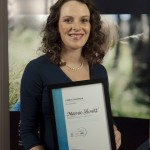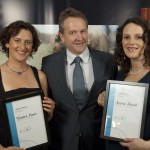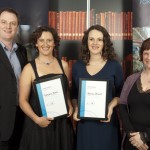Where did we come from; how are we made; and how will it all end?
These fundamental questions are being tackled by the 2009 L’Oréal Australia For Women in Science Fellows who received their Fellowship from Mark Tucker, CEO of L’Oréal Australia, at a ceremony at L’Oréal’s Australian head office in Melbourne on Tuesday 25 August.
The Fellows are:
- Tamara Davis, University of Queensland, Brisbane/University of Copenhagen
- Marnie Blewitt, Walter and Eliza Hall Institute of Medical Research, Melbourne
- Zenobia Jacobs, University of Wollongong
They will receive their Fellowships from Mark Tucker, Managing Director of L’Oréal Australia, at a ceremony at L’Oréal’s Australian head office in Melbourne at 6pm on Tuesday 25 August.
“These three young women are tackling big questions. They already have remarkable research records. Each receives a $20,000 Fellowship which we hope will help them through the most challenging part of any science career-the transition from PhD to independent researcher,” says Mark Tucker.
This is the third year of the L’Oréal Australia For Women in Science Fellowships. The Fellows were chosen from 111 applicants by a group of eminent scientists. The Fellowship funds are intended to further their research and may be used for any associated expenses, including childcare.
The three recipients are:
Tamara Davis – On the hunt for dark energy
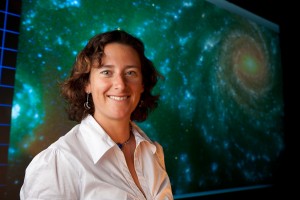
Tamara Davis, University of Queensland / University of Copenhagen (Photo credit: timothyburgess.net)
The stuff we can see in the night sky makes up just four per cent of the Universe. The rest consists of dark matter and dark energy, but what these are made of remains a mystery. Tamara Davis will use supernovae to find dark energy.
The discovery in 1998 that the expansion of the Universe is accelerating required a rethink of cosmology. Tamara is trying to put the pieces back together again. She will use the new Australian Skymapper telescope to find hundreds of supernovae and use these to detect the influence of dark energy on gravity.
“Supernovae are extremely bright stellar explosions. Because we know how bright they are we can use them as ’standard candles’ to accurately measure distance and motion across the Universe,” Tamara says.
[go to Tamara’s full profile and you tube video]
Zenobia Jacobs – How did we get here? Dating our movement out of Africa one grain of sand at a time
Zenobia Jacobs uses single grains of sand to accurately date the first signs of human society: engineering, art and communities. Last week Science reported on her dating of the first engineers. They were using fire to harden stone axes 75,000 years ago.
Each grain of sand contains a ‘clock’ that records how long the grain has been buried in the ground. Zenobia has perfected a technique for reading this clock accurately up to 500,000 years ago.
Now, with her L’Oréal Fellowship she will turn to the vexed question: when did humans first settle Australia?
[go to Zenobia’s full profile and you tube video]
Marnie Blewitt – It takes more than genes to make a human
The Human Genome program revealed that it takes 30,000 genes to make a human. But that’s not the full story. Marnie Blewitt wants to know more, “How does a cell know which of its 30,000 or so genes should be active and which should be dormant?” she asks.
“How does the keratin gene get turned on in hair follicle cells but not in the cells of the eye?”
Marnie, a researcher at the Walter and Eliza Hall Institute of Medical Research in Melbourne is using the X chromosome as a tool to pry open the secrets of epigenetics-how our genes get turned on and off. The Fellowship will contribute to a lab assistant and childcare. Marnie is expecting her first child in September.
[go to Marnie’s full profile and you tube video]
To see the full stories and photos click on the following links:
- Tamara Davis, University of Queensland, Brisbane/University of Copenhagen
- Marnie Blewitt, Walter and Eliza Hall Institute of Medical Research, Melbourne
- Zenobia Jacobs, University of Wollongong
Call Niall Byrne on 03 9398 1416 / 0417 131 977 for interviews.
The public site at www.scienceinpublic.com.au/loreal will be open from 6 pm on 25 August
Update (26 August 2009) Photos from the presentation ceremony:


